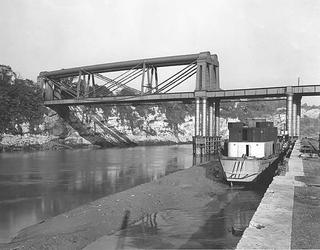
Cast iron boundary marker, London & South Western Railway
- Made:
- 1838-1922 in unknown place
Boundary marker, London & South Western Railway, cast iron, about 1860 to 1910.
London & South Western Railway cast iron boundary post, probably dating from about 1860 to 1920.
Boundary markers like this were used to clearly identify the limits of railway land and to distinguish them from adjacent property. They were typically used where it was difficult to install a fence or hedge, where there was a risk of encroachment by other landowners, or where there had been a dispute over land ownership. They also delineated one railway company’s territory from another’s, for instance to make it clear who was responsible for maintaining a particular stretch of line.
The London & South Western Railway was formed in 1839, initially as the London & Southampton Railway. It expanded to serve Surrey, Hampshire, Berkshire and Dorset, with lines extending into Devon and Cornwall. Its network included commuter lines serving suburban towns to the south of London. In 1923 the LSWR was absorbed into the Southern Railway.
The boundary marker is a practical design in cast iron, probably made in the foundry at the London & South Western Railway’s works at Eastleigh in Hampshire, or if it dates from before 1891, at the company's Nine Elms works in London. The inscription on the front reads "L & N S Ry Co". The finger-shaped post has a long base that was buried deep in the ground, to discourage any disgruntled landowners from surreptitiously digging it up and moving it.
Details
- Category:
- Railway Infrastructure
- Object Number:
- 1998-11822
- Materials:
- iron
- type:
- boundary marker
- credit:
- George, Kevin




